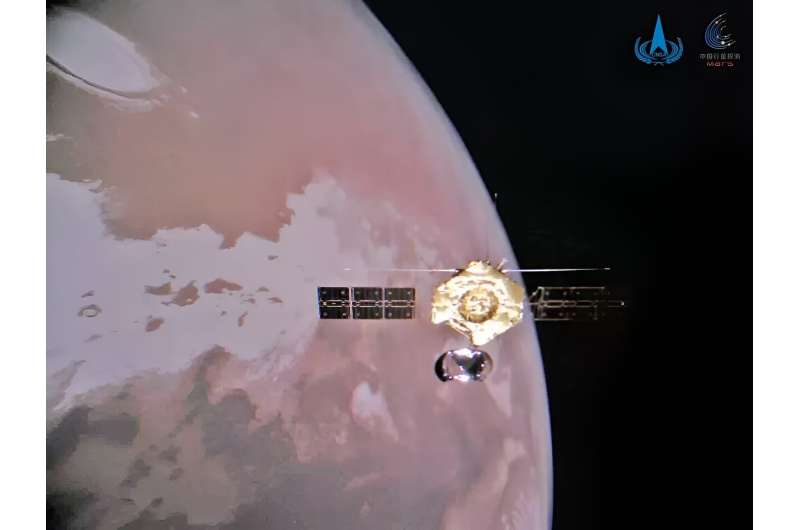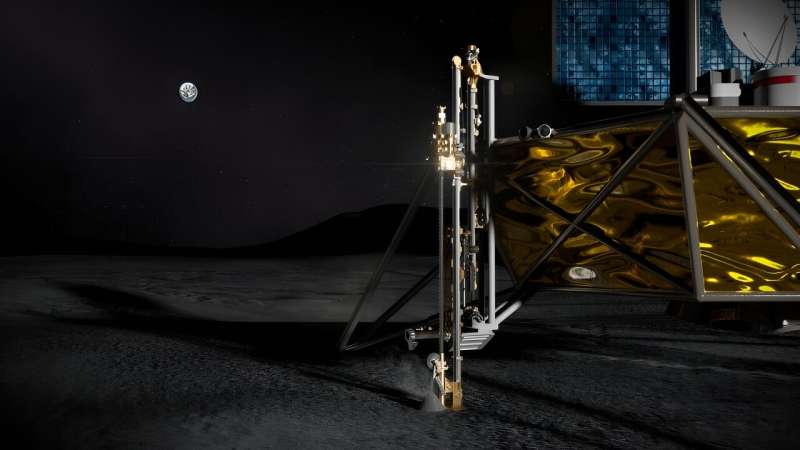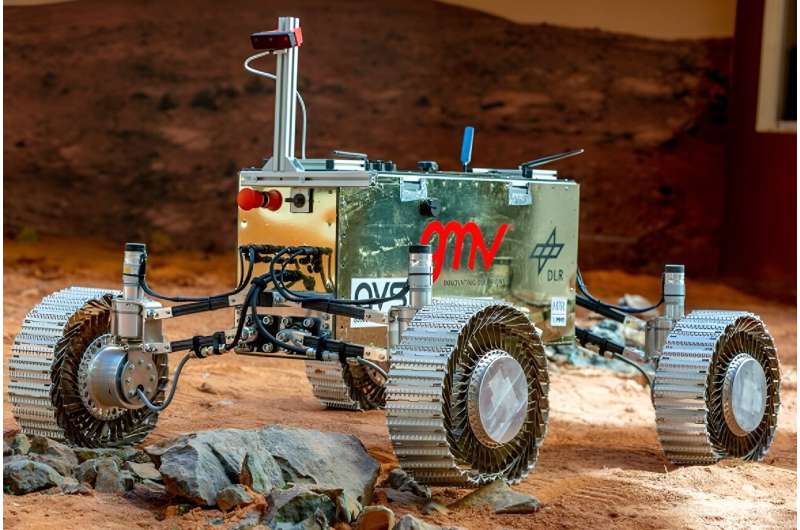
Copernical Team
Airbus Introduces "Detumbler" Device to Address Satellite Tumbling in Low Earth Orbit
 Airbus has launched a groundbreaking technology designed to mitigate the risks posed by tumbling satellites in space. The innovative device, named "Detumbler," was developed in association with Exotrail and EnduroSat and is scheduled for an in-orbit demonstration early in 2024. The Detumbler represents a significant advancement in addressing the challenges of space debris, particularly in Low Ea
Airbus has launched a groundbreaking technology designed to mitigate the risks posed by tumbling satellites in space. The innovative device, named "Detumbler," was developed in association with Exotrail and EnduroSat and is scheduled for an in-orbit demonstration early in 2024. The Detumbler represents a significant advancement in addressing the challenges of space debris, particularly in Low Ea EBAD's NEA Payload Release Modules prove crucial in SpaceX Transporter-9 mission
 Ensign-Bickford Aerospace and Defense (EBAD) has once again marked its presence in the ever-evolving space industry with its innovative NEA Payload Release Modules (PRM), playing a pivotal role in the recent SpaceX Transporter-9 Rideshare mission. This achievement not only showcases the PRM's advanced dispensing capabilities but also highlights EBAD's commitment to delivering high-quality aerosp
Ensign-Bickford Aerospace and Defense (EBAD) has once again marked its presence in the ever-evolving space industry with its innovative NEA Payload Release Modules (PRM), playing a pivotal role in the recent SpaceX Transporter-9 Rideshare mission. This achievement not only showcases the PRM's advanced dispensing capabilities but also highlights EBAD's commitment to delivering high-quality aerosp ICEYE expands SAR satellite constellation with four new satellites
 ICEYE, a prominent name in persistent monitoring and natural catastrophe solutions using radar imaging satellites, has recently fortified its constellation with the successful deployment of four new synthetic aperture radar (SAR) satellites. Launched on November 11 via SpaceX's Transporter-9 smallsat rideshare mission, coordinated by Exolaunch, these satellites took flight from Vandenberg Space
ICEYE, a prominent name in persistent monitoring and natural catastrophe solutions using radar imaging satellites, has recently fortified its constellation with the successful deployment of four new synthetic aperture radar (SAR) satellites. Launched on November 11 via SpaceX's Transporter-9 smallsat rideshare mission, coordinated by Exolaunch, these satellites took flight from Vandenberg Space Gemini North peers deeper into the dust with new instrument
 Gemini North, one half of the International Gemini Observatory operated by NSF's NOIRLab, is now peering deeper into the dusty dwellings of young stars with its new IGRINS-2 instrument. This next-generation spectrograph is an upgraded version of the high-demand visiting instrument IGRINS on Gemini South that will expand our understanding of cosmic objects shrouded by dust and gas.
IGRINS-2
Gemini North, one half of the International Gemini Observatory operated by NSF's NOIRLab, is now peering deeper into the dusty dwellings of young stars with its new IGRINS-2 instrument. This next-generation spectrograph is an upgraded version of the high-demand visiting instrument IGRINS on Gemini South that will expand our understanding of cosmic objects shrouded by dust and gas.
IGRINS-2 AI Chemist creates Mars-compatible oxygen catalyst from meteorites
 The dream of colonizing Mars has taken a significant leap forward thanks to groundbreaking research led by scientists at the University of Science and Technology of China (USTC) and the Chinese Academy of Sciences (CAS). This research, recently published in Nature Synthesis, outlines a novel method for synthesizing oxygen evolution reaction (OER) catalysts using Martian meteorites, driven by an
The dream of colonizing Mars has taken a significant leap forward thanks to groundbreaking research led by scientists at the University of Science and Technology of China (USTC) and the Chinese Academy of Sciences (CAS). This research, recently published in Nature Synthesis, outlines a novel method for synthesizing oxygen evolution reaction (OER) catalysts using Martian meteorites, driven by an China develops 'GoMars' Model for enhanced Mars mission planning
 Chinese scientists have taken a significant leap in Mars exploration technology by developing a comprehensive numerical model, "GoMars," to simulate Mars' atmospheric environment. This advancement is particularly crucial for the upcoming Tianwen 3 mission, scheduled around 2028, aimed at returning Martian samples to Earth. The study detailing this model was recently published in the Chinese Scie
Chinese scientists have taken a significant leap in Mars exploration technology by developing a comprehensive numerical model, "GoMars," to simulate Mars' atmospheric environment. This advancement is particularly crucial for the upcoming Tianwen 3 mission, scheduled around 2028, aimed at returning Martian samples to Earth. The study detailing this model was recently published in the Chinese Scie UTA developing more powerful rocket engines for space travel
 A University of Texas at Arlington engineering researcher has received a NASA grant to use rotating detonation rocket engines (RDREs) for in-space propulsion to make them more efficient, compact and powerful. Liwei Zhang, assistant professor in the Department of Mechanical and Aerospace Engineering (MAE), will lead the $900,000 project.
"Detonation is very fast combustion. Inside an RDRE,
A University of Texas at Arlington engineering researcher has received a NASA grant to use rotating detonation rocket engines (RDREs) for in-space propulsion to make them more efficient, compact and powerful. Liwei Zhang, assistant professor in the Department of Mechanical and Aerospace Engineering (MAE), will lead the $900,000 project.
"Detonation is very fast combustion. Inside an RDRE, China wants to retrieve a sample of Mars by 2028

China continues to take great strides as part of its goal to become a superpower in space and a direct competitor with NASA. In addition to its proposed expansion of the Tiangong space station and the creation of the International Lunar Research Station (ILRS), China is also planning on sending crewed missions to Mars in the coming decade. In preparation for the arrival of taikonauts on the red planet, China is gearing up to return samples of Martian soil and rock to Earth roughly two years ahead of the proposed NASA-ESA Mars Sample Return (MSR).
This mission will be the third in the China National Space Administration's (CNSA) Tianwen program (Tianwen-3) and will consist of a pair of launches in 2028 that will return samples to Earth in July 2031.
NASA wants to learn to live off the land on the moon

In preparation for the upcoming Artemis missions to the lunar south pole, NASA recently solicited a request for information (RFI) from the lunar community to map out its future Lunar Infrastructure Foundational Technologies (LIFT-1) demonstration for developing In-situ Resource Utilization (ISRU) technologies as part of the agency's ambitious Lunar Surface Innovation Initiative (LSII).
The primary goal of LIFT-1, which is being driven by NASA's Space Technology Mission Directorate (STMD), is to advance ISRU technologies for extracting oxygen from the lunar regolith, including manufacturing, harnessing, and storing the extracted oxygen for use by future astronauts on the lunar surface.
ESA is testing a modular multipurpose rover that could be a science lab or a tiny bulldozer

Most rovers have been built for Mars, and each one of them is a complex machine designed with specific goals and terrains in mind. But the moon is different than Mars. We're not searching for life there; we're trying to establish a presence.
In recognition of the difference, the ESA is developing modular rovers that can serve different needs with only small modifications.
It's called the European Moon Rover System (EMRS), and its goal is to "develop a versatile surface mobility solution for future lunar missions," according to newly published papers. The surface mobility systems will serve four upcoming ESA missions: the Polar Explorer (PE), In-Situ Resource Utilization (ISRU), Astrophysics Lunar Observatory (ALO) and Lunar Geological Exploration Mission (LGEM).

